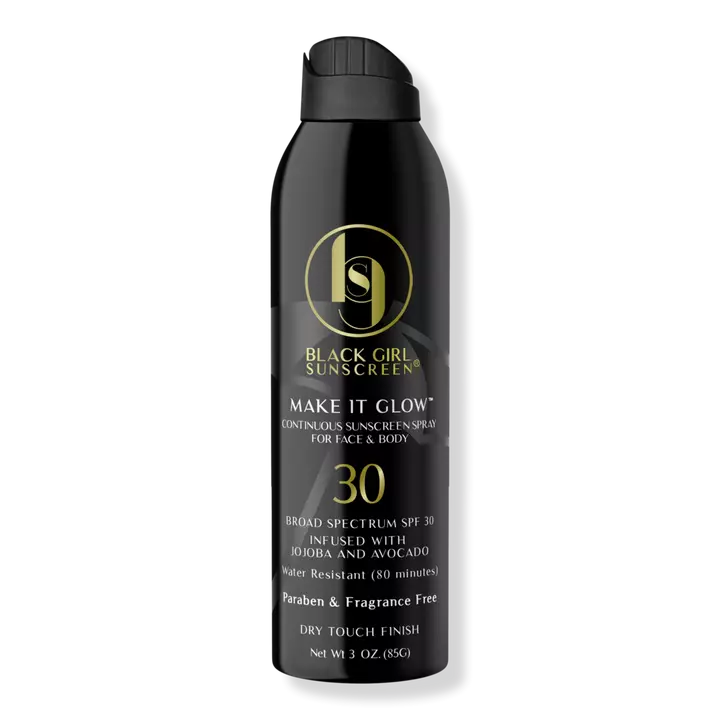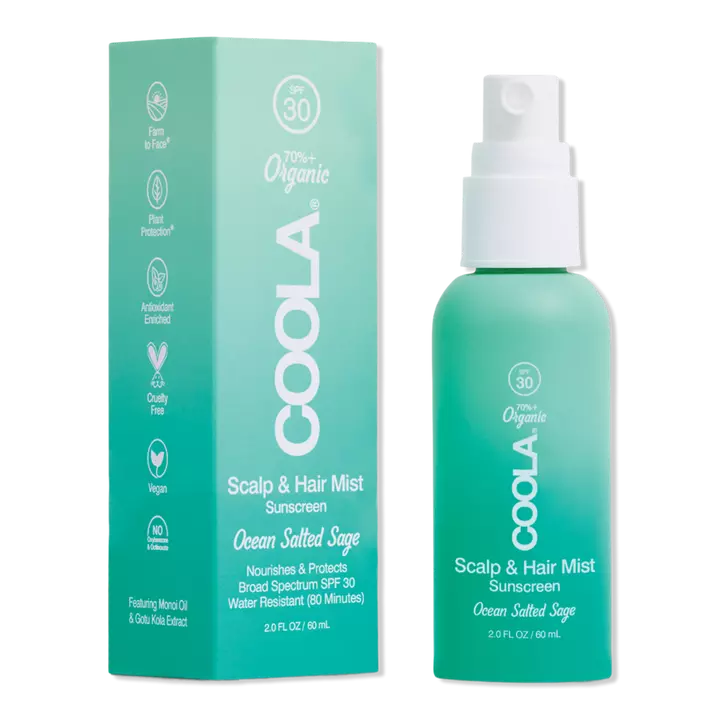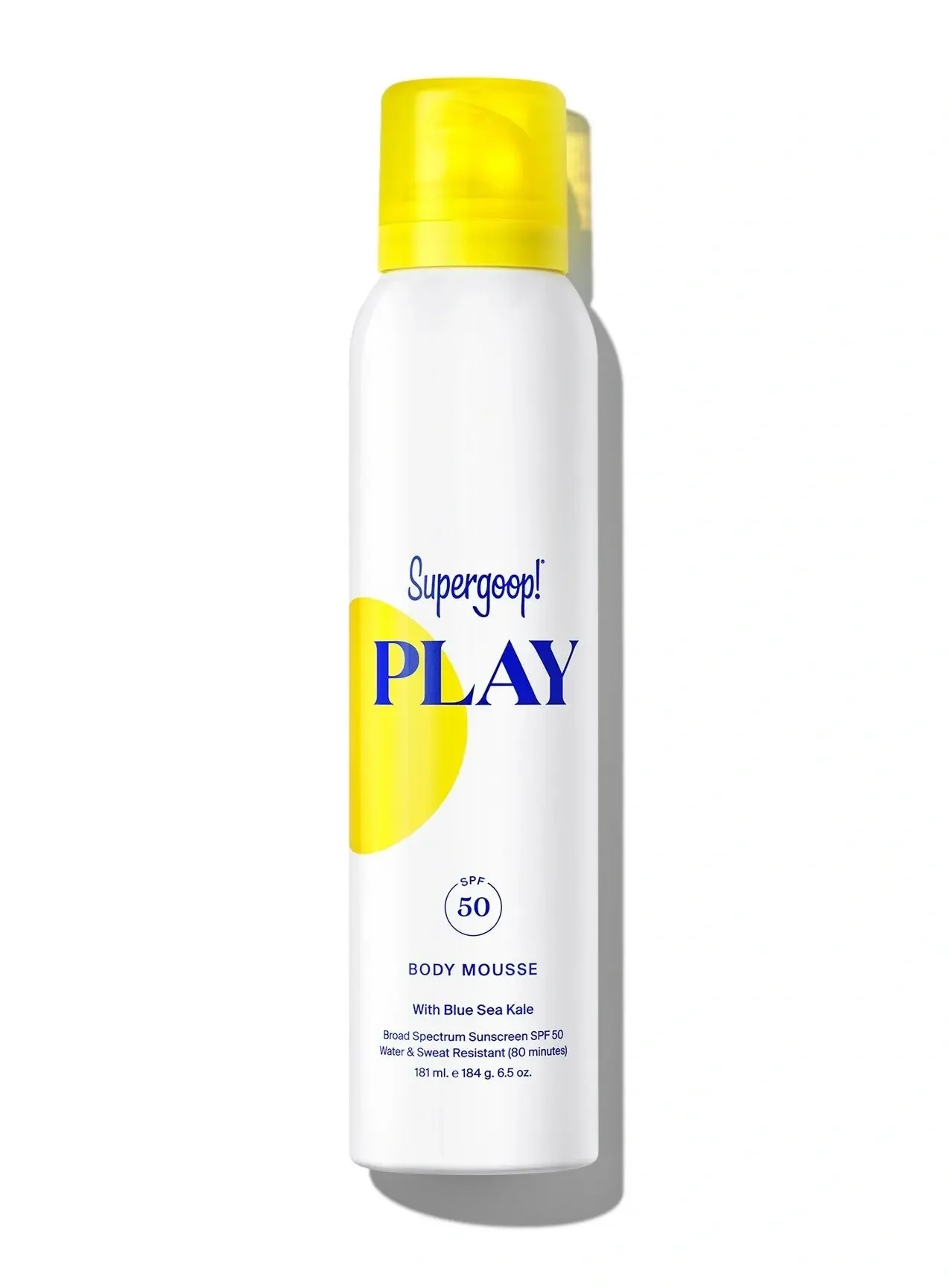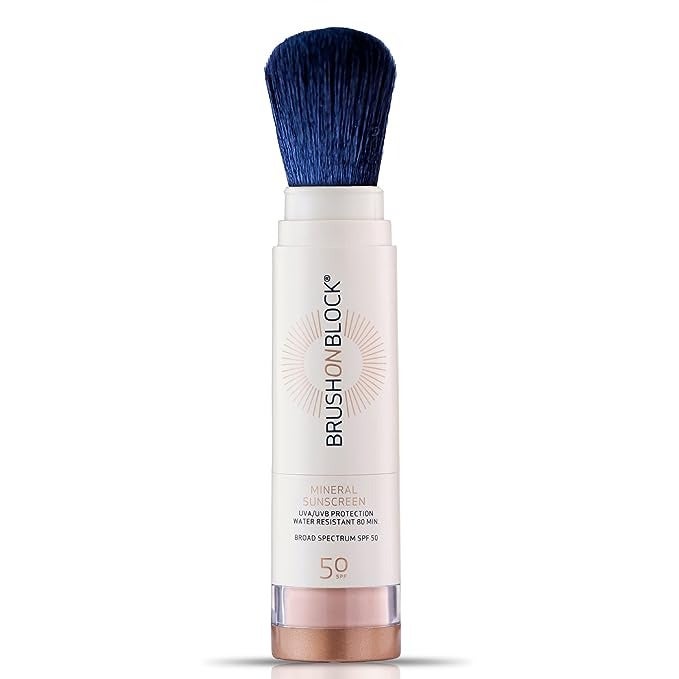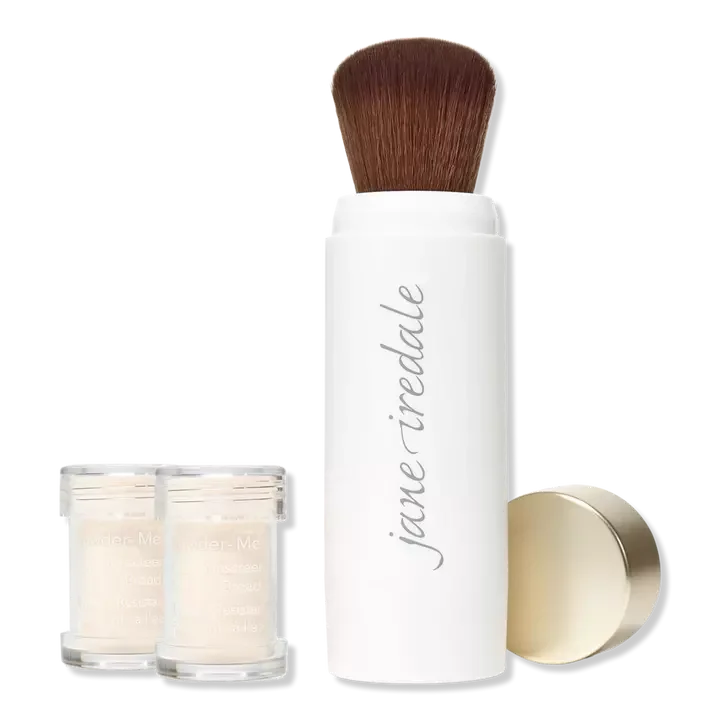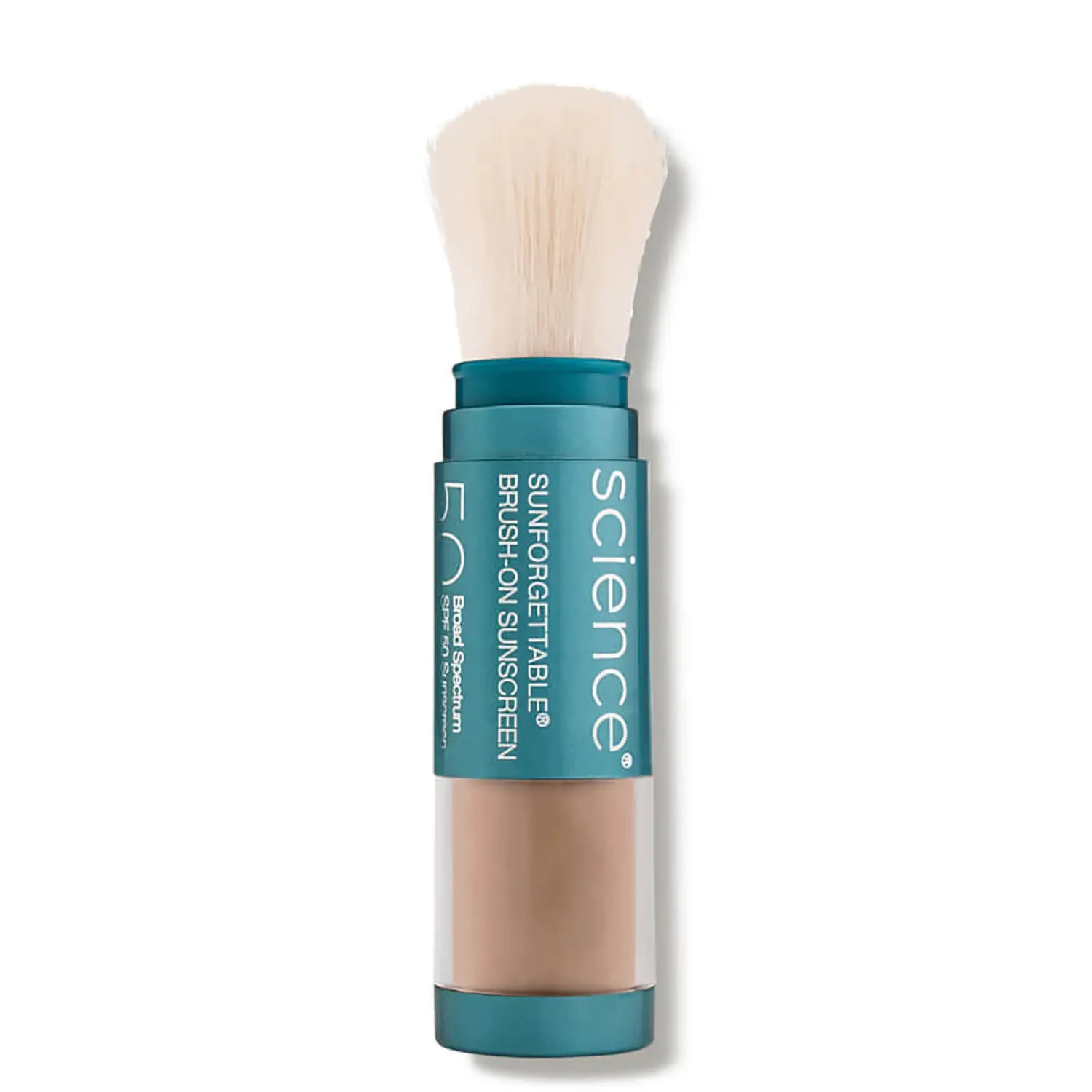Everyone’s Talking About Scalp Sunscreen — But Is It Right For Black Hair?
Photographed by Rochelle Brock.
Welcome to Sun Blocked, Refinery29’s global call to action to wake up to the serious dangers of tanning. No lectures or shaming, we promise. Instead, our goal is to arm you with the facts you need to protect your skin to the best of your ability, because there’s no such thing as safe sun.
Scalp care is the beauty trend of the moment, and for good reason: If you imagine that your scalp is the soil from which your hair grows its healthiest, then taking care of and nurturing it — just like you would your skin — is paramount. While many of us are into dermarolling and glycolic acid-rinsing our scalps to clarify and cleanse, is it important for us to do more? When it comes to textured hair — particularly protective styles like locs, braids, crochet braids or anything where the scalp is exposed to the world, the muck on the streets, and of course, the sun — you might want to think about how protected the skin here really is.
AdvertisementADVERTISEMENT
We’ve gained a deeper understanding of the extreme dangers of prolonged sun exposure like potentially deadly skin cancer and painful sunburn, so it makes sense that we're slathering ourselves in a high factor, broad spectrum SPF 50. But our head is one crucial spot many of us tend to miss, and when lots of protective hairstyles leave the skin here exposed, it's more important than ever to shield your scalp from the elements. But is scalp sunscreen a necessary step? And are there any downsides of scalp SPF when you’re wearing your hair in a protective style? We asked the experts.
The Benefits of Scalp SPF
The skin on your scalp is the same as the skin elsewhere on your body. This means it’s important to check your head for abnormal skin changes as much as the rest of your skin. Unprotected sun exposure increases the risk of skin cancer and the scalp is especially vulnerable. In fact, basal cell carcinoma, one of the most common types of skin cancer, is more often found on the head and neck than other locations on the body.
“Sun exposure can happen along partings, hairlines, and areas where the hair is pulled tighter or where it is styled to allow more scalp exposure to the sun,” explains Adeline Kikam, DO, Ms, FAAD, Board-certified dermatologist and CEO and founder of Skinclusive Dermatology & Cosmetic Surgery. “In such cases, proper sun protection measures should be taken in the form of scarves, hats, head wraps and even sunscreen as convenient to the individual.” As a physical blocker, protective hairstyles like braids and locs provide some level of sun protection to the scalp due to the wide area they tend to cover, but this varies based on factors such as the density of the hair and style.
AdvertisementADVERTISEMENT
“The scalp, like other areas of the body, is susceptible to the damaging effects of UV rays, which can have both short-term and long-term consequences,” says Dr. Kikam. “These effects aren’t unique to not using SPF on the scalp, but what a lack of sun protection [on] the scalp can do.” Another issue is the lasting effects of a sunburn on the scalp. The scalp is particularly prone to this, and it can be painful and uncomfortable. “A severe sunburn on the scalp can cause inflammation and induce [hair] shedding although this is often temporary,” says New York-based dermatologist Darice Fadeyi, MD. In addition to this, some protective styles can put tension on both the hair follicle and the scalp, leading to further damage such as traction alopecia — a form of hair loss — among other scalp ailments. All of that, combined with the shedding that a sunburn can cause, can exacerbate hair loss — an unspoken emotional toll. Furthermore, UV rays can damage the protein structure of hair strands, causing dryness, brittleness, and color fade, while sun exposure can, at times, exacerbate some existing scalp conditions like dandruff and eczema by stripping the scalp of moisture leading to increased inflammation and irritation.
The Lasting Impact of Scalp SPF
There are plenty of reasons to wear sunscreen on your scalp, especially in a protective style, but there could be one downside. The efficacy of a scalp SPF depends on how you live your best life in a protective style. Dermatologists encourage us to double cleanse our faces (and sometimes our bodies) every evening to adequately remove every last scrap of sunscreen. But in a protective style, you’re unlikely to be washing your hair weekly, let alone every day. I myself have taken a little too long between washes when my hair was in braids (oops). Using regular scalp SPF can lead to build up of sunscreen residue on the scalp over time, which can potentially irritate it. “If the scalp is not being cleansed [or] there is a lot of oils and products building up on the scalp — and SPF is being applied over it — then it's going to lose some of its effectiveness,” adds Dr. Fadeyi. This, continues Dr. Fadeyi, is because sunscreen is intended to be applied directly onto the skin, otherwise absorption can be reduced.
AdvertisementADVERTISEMENT
It’s a catch-22: No-one wants a burnt scalp, but daily (or even weekly) hair washing can loosen protective styles, which feels counter-productive, not to mention a waste of time and money. Because it’s best to apply to areas of the scalp that are exposed directly to the sun, you might want to consider the hair products you use, too. For example, some hair gels may not be compatible with more liquid sunscreens and cause pilling on the scalp, which is where products form tiny balls that roll off of your skin. This isn’t something you really want on your scalp for a moment, let alone the extended periods of time that we tend to wear protective styles for.
What’s the difference between scalp sunscreen and heat protectant?
Opt for sunscreen specifically formulated for the scalp rather than a heat protectant with UV protective claims. Both are very different. Sunscreens formulated for the skin on the scalp will include the same UV filters as a traditional, FDA-approved body or face sunscreen to protect your skin from the sun’s rays. Look out for something which offers high, broad spectrum protection. Heat protectants — also referred to as ‘hair sunscreen’ — offer a different kind of protection. Hair sunscreen prevents the physical signs of hair damage, such as color fade and dryness. Put simply, they aren’t the same, and if you’re solely relying on hair sunscreen or heat protectant to shield your scalp from UV rays, you’re leaving yourself exposed.
What is the best SPF for the scalp?
AdvertisementADVERTISEMENT
Choose a sunscreen that is compatible with your hair type and doesn't cause excessive greasiness or buildup — ideally something lightweight and water-resistant with a broad spectrum SPF of at least factor 30. Scalp sunscreens, much like face and body sunscreens, are also available in both chemical versions (sunscreens that absorb harmful UV rays and convert them into heat so that they can’t cause harm) and physical versions (sunscreens that deflect the sun’s rays).
For a protective style, my personal favorite sunscreen option is a mist, like Sun Bum Scalp & Hair Mist SPF30, Black Girl Sunscreen Make It Glow SPF 30, or Coola Scalp & Hair Mist Organic Sunscreen SPF 30. What I’ll typically do is spritz a little on my fingers and run it over the parts of my scalp exposed by my braids before doing another all-over spray like you would with dry shampoo. I also like a mousse sunscreen to really help maintain that style and keep it locked in place, such as Supergoop PLAY Body Mousse SPF 50. There are plenty of powder scalp sunscreens, too, which are easy to apply (and reapply!) such as Brush On Block Translucent Mineral Powder Sunscreen SPF 50 or Jane Iredale Powder-Me SPF 30 Dry Sunscreen, but the best one for darker skin tones (so you don’t have to worry about a dusty-looking scalp) is by far Colorescience Sunforgettable Total Protection Brush-On Shield Sunscreen SPF 50.
When do we need scalp SPF?
AdvertisementADVERTISEMENT
The general expert consensus is that a scalp SPF is great if you’re looking to maximize sun protection. In an ideal world, we’d be doing scalp checks for moles as often as we do checks on our bodies, but that’s hard because we almost never see the backs of our heads. It’s not uncommon for hairstylists to point out irregular-looking moles on a client’s scalp. If you see them regularly, don’t be afraid to ask them if they have noticed any changes. In the case of something alarming or concerning — or really, just as a normal standard medical check — you should always consult with your dermatologist.
If you have a family history of skin cancer, or even a personal one, any sun protection is good protection. Aside from sunscreen, UPF 50 clothing and accessories are an excellent way to shield against UV. Dr. Kikam suggests that covering up is better for scalp protection. (It doesn’t require the trial and error of finding a sunscreen that works with your style.) “I can’t emphasize enough that more physical forms of sun protection in the form of caps, hats, scarves and other hair accessories that shield from UV exposure may be more suitable for some than sunscreen,” she confirms.
Scalp SPF might be yet another step to protect your scalp from harmful UV rays, but it’s a huge cherry on top of an already existing SPF routine.
At Refinery29, we’re here to help you navigate this overwhelming world of stuff. All of our market picks are independently selected and curated by the editorial team. If you buy something we link to on our site, Refinery29 may earn commission.
AdvertisementADVERTISEMENT








